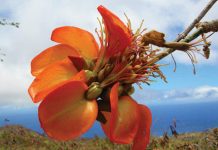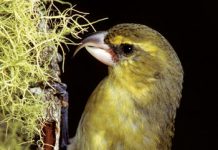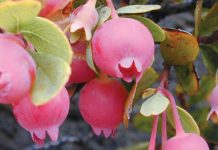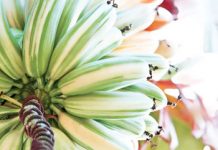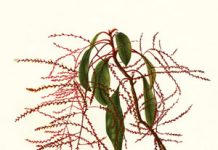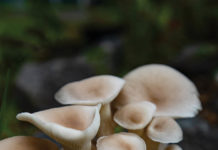Story by Shannon Wianecki | Photo courtesy of Kapalua Resort
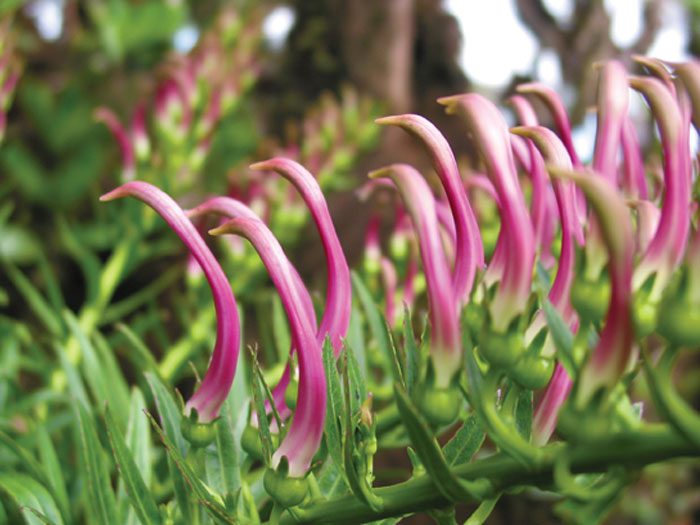 Field crews working in Maui’s rain forests look forward to late summer and fall, when the spectacular koli‘i blooms. The native shrub shoots a tall, slender stalk into the air, which then opens like an umbrella contrived of curled, pink, come-hither blossoms. Hawaiian honeycreepers respond to the lure by burying their beaks in the tubular flowers, sucking up nectar, and collecting sticky white pollen on their foreheads in the process.
Field crews working in Maui’s rain forests look forward to late summer and fall, when the spectacular koli‘i blooms. The native shrub shoots a tall, slender stalk into the air, which then opens like an umbrella contrived of curled, pink, come-hither blossoms. Hawaiian honeycreepers respond to the lure by burying their beaks in the tubular flowers, sucking up nectar, and collecting sticky white pollen on their foreheads in the process.
The koli‘i, known to botanists as Trematolobelia macrostachys, is a member of the remarkable lobelia family. Through the process of adaptive radiation, the few pioneer lobelias that landed in Hawai‘i several millennia ago evolved into a multitude of species, each with a unique and highly specialized form. Like drag queens of the plant world, lobelias tend to be showy, tossing out bursts of blossoms, but the koli‘i is the only version to flaunt its flowers by means of a parasol.
Hawaiian lobelioids include 110 recognized species—a full 10 percent of the native flora of the Islands. These charismatic flowers are all endemic, meaning they evolved here and exist naturally nowhere else on Earth. Lobelias are often heralded as an example of coevolution, as their tube-shaped flowers developed in sync with the exaggerated, sickle-shaped beaks of native honeycreepers. Unfortunately, both the koli‘i and its pollinators are exceedingly rare, because of predation, habitat loss, and encroachment by alien species.
Consider the splendid promise of Pu‘ukoli‘i Road, leading up the mountain in Ka‘anapali. Perhaps at one time, Pu‘ukoli‘i was a hillside lined with dozens of exuberant pink umbrellas that greeted visitors, feathered and human alike.—Shannon Wianecki





